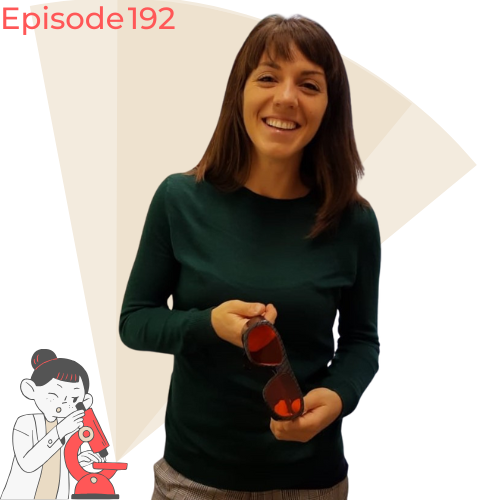What to Expect:
In this episode, Sara Hernandez Mejias discusses her innovative research on light conversion and its applications in photochemistry and nanophotonics. Sara shares her journey from studying physics in Spain to working in molecular biology and spectroscopy across Europe, and her work on designing photosystems to harness light as an energy source.
About the Guest:
Sara Hernandez Mejias
Sara Hernandez Mejias is a senior researcher at the Madrid Institute of Advanced Studies in Nanoscience. Her work focuses on light conversion and the design of photosystems to harness light as an energy source for various applications, including photochemistry and nanophotonics. Sara’s interdisciplinary background spans physics, molecular biology, and spectroscopy.

🌟 Key Takeaways from This Episode:
- Light Conversion: Designing photosystems to optimize light as an energy source for different applications.
- Career Journey: From physics in Spain to molecular biology and spectroscopy across Europe.
- Favorite Experiment: Combining molecular biology with spectroscopy to tune light conversion pathways.
🔬 In This Episode, We Cover:
Sara’s Research:
Sara’s research focuses on designing photosystems that harness light as an energy source. By tuning these systems, she aims to optimize light conversion for various applications, including photochemistry and nanophotonics. Her work involves creating and analyzing models to simulate light conversion mechanisms.
Sara’s Career Journey :
Sara’s academic journey began with a Bachelor’s in Physics in Spain. She pursued her passion for interdisciplinary research, leading her to molecular biology and spectroscopy across Europe. Her diverse experiences have enriched her research perspectives and expertise.
Sara’s Favourite Research Experiment:
Sara’s favorite experiment involves combining molecular biology with spectroscopy to tune light conversion pathways. By embedding specific molecules in proteins and tuning their structure, she can selectively control light conversion processes, enhancing the efficiency of these systems.
Life as a Scientist- Beyond the Lab :
Sara values the collaborative nature of scientific research and enjoys engaging with the global scientific community. She is passionate about teaching and mentoring the next generation of scientists and values the international experiences she has had throughout her career.
Sara’s 3 Wishes
- Increased funding for research: Sara wishes for more financial support to advance innovative research projects.
- Greater collaboration between researchers: She advocates for stronger partnerships to enhance knowledge sharing and collaborative efforts in research.
- Improved public understanding of scientific research: Sara emphasizes the importance of public awareness and support for scientific advancements.
Sara’s Time on @RealSci_Nano:
Sara will be taking over the RealSci_Nano Twitter account to share her research on light conversion and its applications. Followers can expect to learn about the innovative techniques and systems her work focuses on, as well as insights into her interdisciplinary research journey.
Join the Conversation
Follow & listen to “Under the Microscope” on Spotify, Apple Podcasts, Castbox, Amazon Music, Goodpods.
Got your own favourite podcast app? Follow the RSS link to find Under the Microscope.
Watch the video of all Under the Microscope episodes on The Science Talk’s YouTube channel. While you are at it, make sure to subscribe to our YouTube Channel.
Learn more about Under the Microscope – https://thesciencetalk.com/under-the-microscope/
Love what we do? Support us:
We also offer partnerships to scientists, research institutions, industry, funding bodies & societies.
Get in touch to start the conversation.
